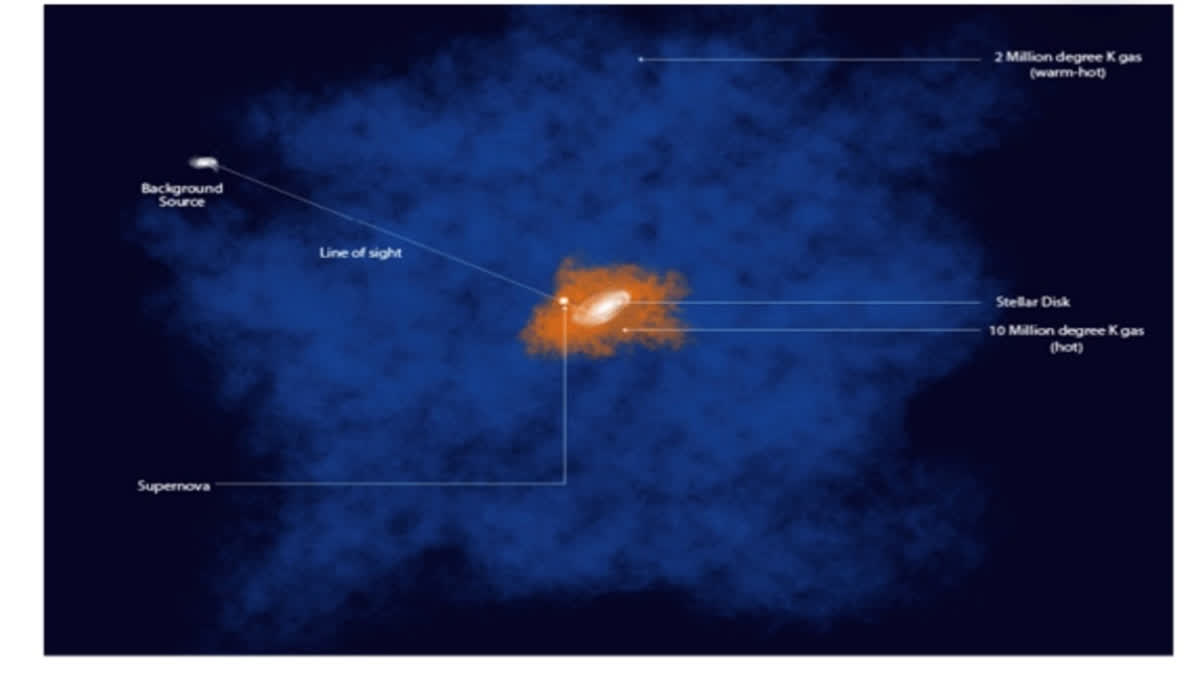New Delhi: Astronomers unravelled the mystery behind the fiery hot gas surrounding the Milky Way, which has puzzled scientists for years. Researchers from the Raman Research Institute (RRI), along with collaborators at IIT-Palakkad and Ohio State University, proposed a new model to explain the origins of this superheated gas.
The Milky Way, like other galaxies, is surrounded by an enormous reservoir of gas, vital for star formation. This gaseous halo, extending up to 7,00,000 light years, was first identified decades ago and measured at temperatures of a few million degrees Kelvin. However, more recent observations revealed gas much hotter--approximately 10 million degrees Kelvin--detected through faint X-ray emissions and absorption signatures in distant quasar spectra.
The scientific community has since sought to identify the sources of energy sustaining this extreme heat. The RRI-led team has concluded that two distinct processes are responsible for the observed phenomena.
Exploding Stars Fuel Fiery Gas
According to the study, the X-ray-emitting hot gas originates from a “puffed-up” region around the stellar disc of the Milky Way. Ongoing star formation within the disc produces massive stars that eventually explode as supernovae. These explosions release enormous energy, heating the surrounding gas to extreme temperatures.
“As explosions occur, they heat the gas floating around the disc of the Milky Way and enrich it with elements synthesised within massive stars,” explained Mukesh Singh Bisht, PhD student at RRI. The heated gas becomes turbulent, either escaping into space or cooling and returning to the disc.
Elemental Clues from Absorbing Gas
The team also discovered that the absorbing hot gas, which interacts with light from distant quasars, has a unique elemental composition enriched with α-elements such as sulfur, magnesium and neon. These elements, formed through nuclear reactions within stellar cores, are ejected during supernova explosions.
“This fiery gas, at least in a few directions, is enriched with large quantities of α-elements. These provide crucial clues about the nuclear reactions occurring within massive stars,” said Dr Biman Nath, faculty at RRI and co-author of the study. The research highlights that some runaway stars ejected from the Milky Way may explode as supernovae above the stellar disc. These explosions generate localised regions of hot, α-enriched gas, which absorb light from quasars, producing the observed shadow signals.
A Dual Explanation
The study concludes that while supernova-driven heating explains the X-ray-emitting gas surrounding the Milky Way, the absorbing gas enriched with α-elements arises from distinct processes tied to runaway stars. Together, these mechanisms account for the mysterious superhot gas observed by astronomers.
The findings, published in The Astrophysical Journal, open new avenues for studying faint X-ray signals and testing models across other frequencies, potentially unveiling further secrets about the Milky Way’s turbulent gaseous halo.



